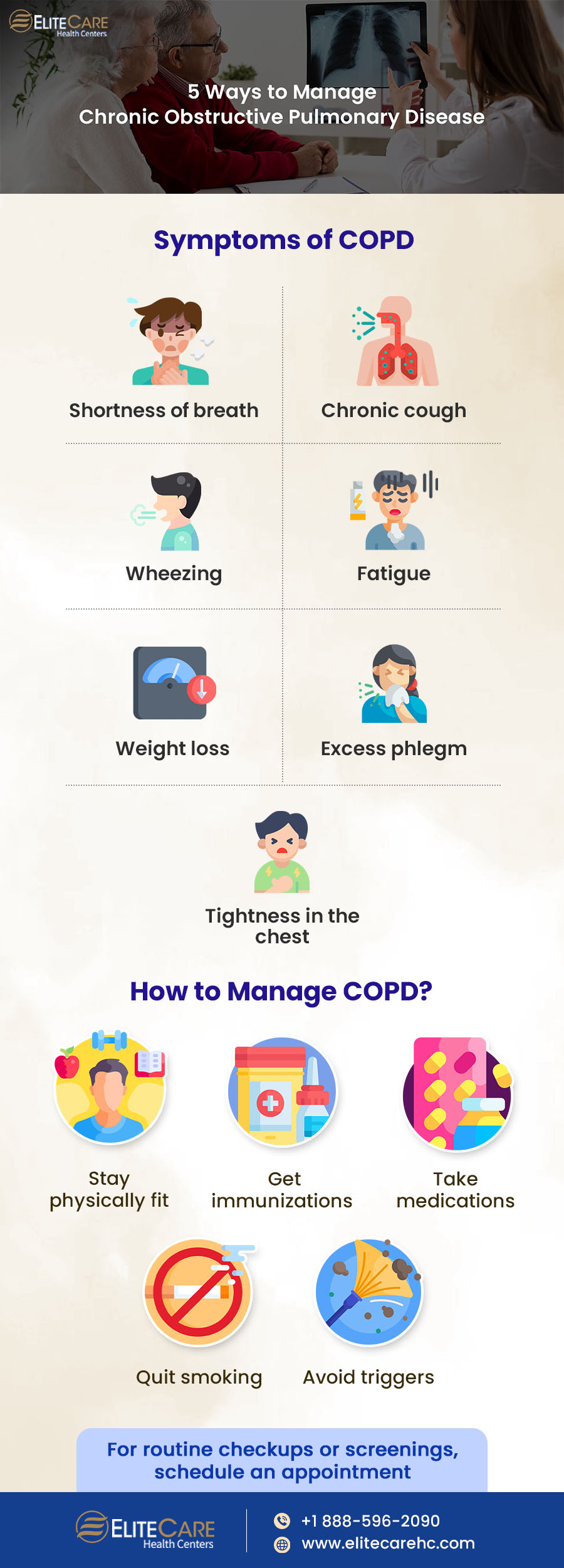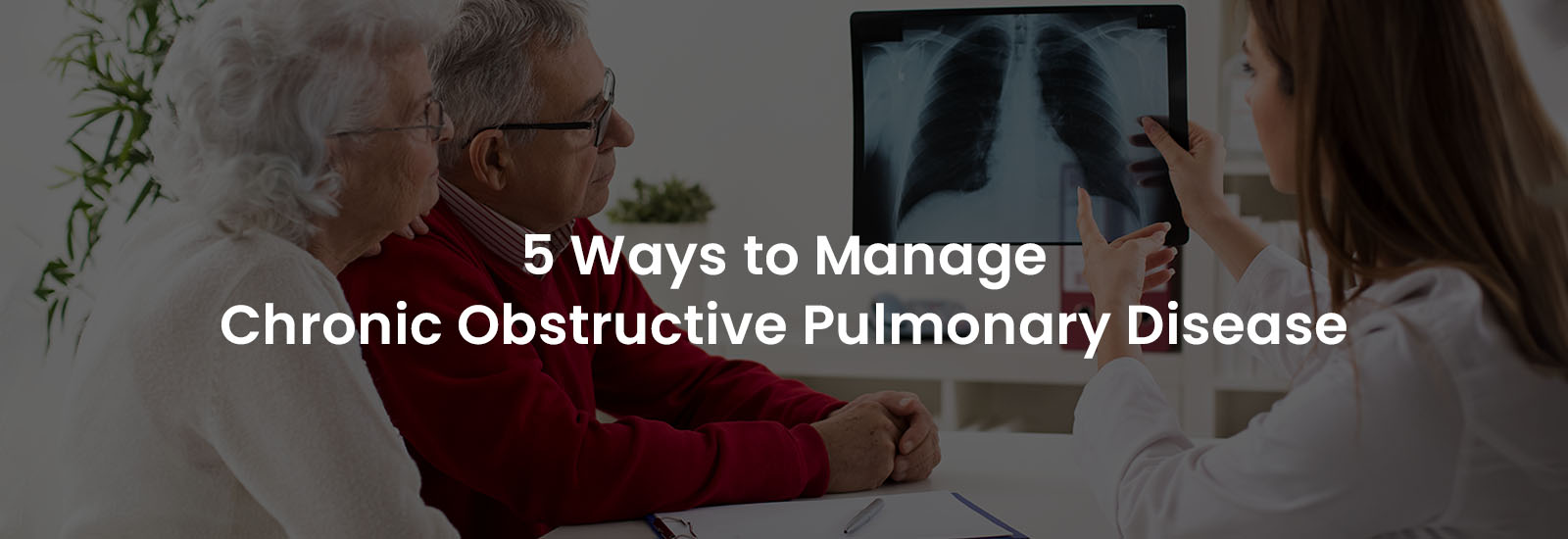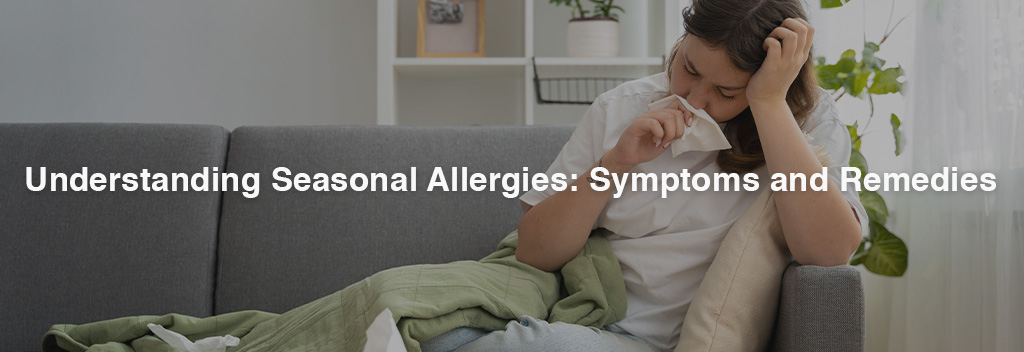
Chronic obstructive pulmonary disease (COPD) is a collective term used for a group of progressive lung conditions that obstruct airflow and cause breathing difficulties. It can lead to a variety of health complications that can significantly impact a person’s quality of life and increase their risk of mortality. In this blog post, we will learn more about the symptoms of COPD, what causes it, and how to manage this condition better.
Chronic obstructive pulmonary disease is the third leading cause of death worldwide.1 More than 150,000 Americans succumb to this condition each year.2 COPD is typically characterized by inflammation and constriction of the airways. As air enters the body, it travels down the windpipe (trachea) and passes through two large tubes called bronchi. These tubes branch off into smaller tubes called bronchioles that eventually lead to a cluster of tiny air sacs known as alveoli. The bronchial tubes and air sacs rely on their natural elasticity to push air out of the body, but conditions like COPD can cause them to lose elasticity and over-expand which can trap air in the lungs during exhalation.
Read More: 5 Ways for Seniors to Have a Healthy Heart
The two main respiratory conditions under COPD that cause airway obstruction are:
Emphysema: It is a lung disease that destroys the delicate walls and elastic fibers of the alveoli. These small airways collapse during exhalation which obstructs airflow out of the lungs.
Chronic bronchitis: This condition causes inflammation and mucus buildup in the bronchial tubes which are responsible for carrying air to and from the air sacs in the lungs. The swelling of the bronchial tubes, coupled with the presence of mucus, creates an obstruction that makes it harder for the lungs to function effectively.
Most individuals with COPD usually tend to suffer from both emphysema and chronic bronchitis.
What Are the Symptoms of COPD?
The symptoms of COPD can vary from person to person and range from mild to severe. Some common symptoms include:
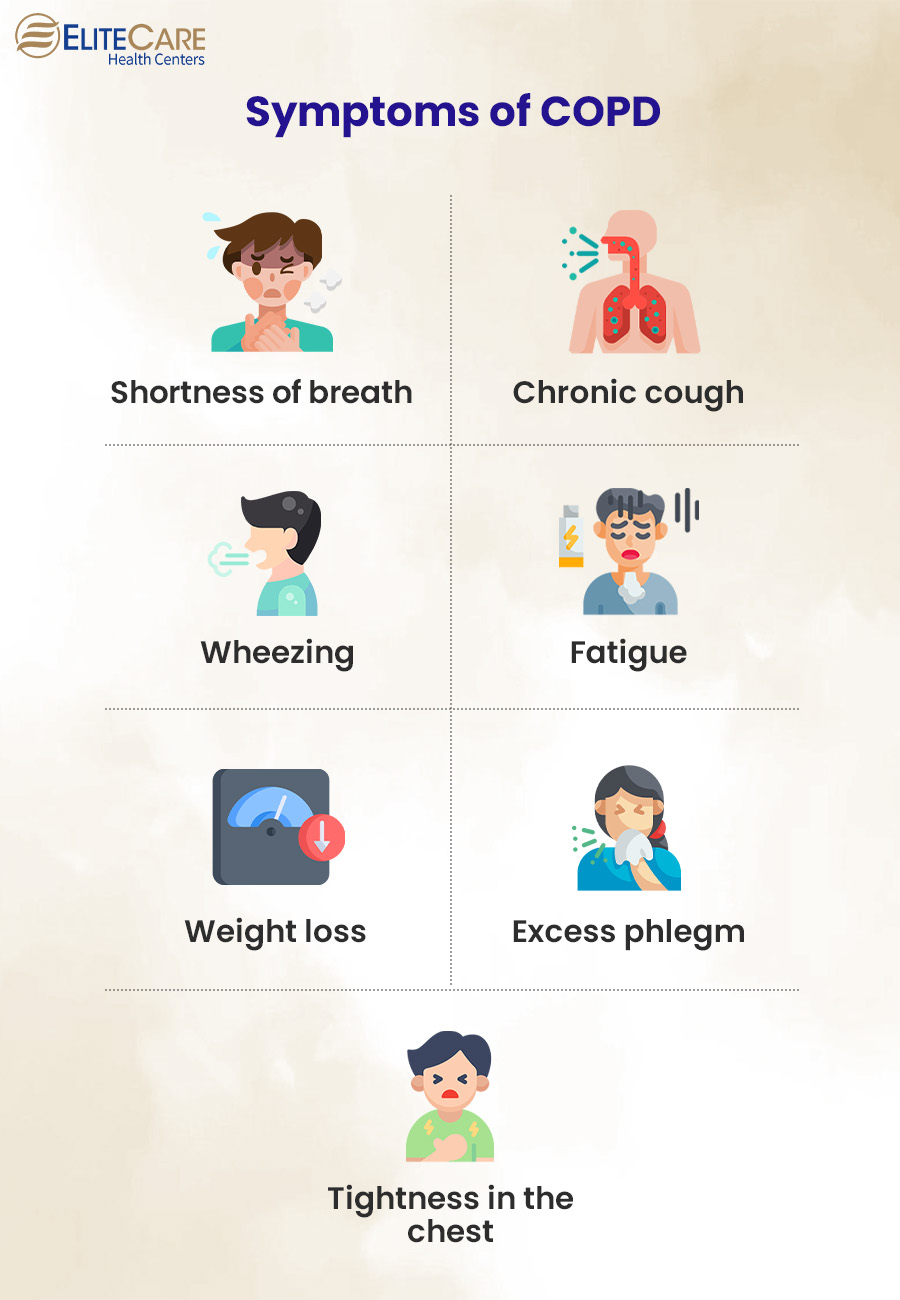
- Shortness of breath
- Chronic cough
- Wheezing
- Fatigue
- Weight loss
- Excess phlegm
- Tightness in the chest
Individuals with COPD must work closely with their healthcare provider to develop a comprehensive treatment plan and regularly monitor their symptoms. Moreover, it is crucial to visit the nearest health care center for prompt medical assistance in case the symptoms worsen so as to help avoid potentially life-threatening health complications.
What Causes COPD?
Air pollution
As women get older, the risk of developing heart disease increases. Women over the age of 55 have a higher likelihood of experiencing a heart attack.
Gender
Occupational exposure
Certain jobs like coal mining or construction work can expose workers to silica, asbestos, or coal dust which can scar the lungs over time.
Respiratory infections
Repeated occurrences of respiratory infections, especially in childhood, can damage the lungs and increase the risk of COPD later in life.
Age
The majority of people who are diagnosed with COPD are over the age of 40 and the likelihood of developing this condition increases even more after the age of 65.
It is also important to note that some people may be more likely to develop this condition as a result of a genetic disorder that leads to insufficient levels of a protein called alpha-1-antitrypsin (AAt). This protein is produced in the liver and released into the bloodstream to safeguard the lungs. Alpha-1-antitrypsin deficiency can either negatively affect the liver, lung, or in some cases both.
Currently, there is no cure for COPD, but the symptoms can be managed and reduced with medication, pulmonary rehabilitation and certain lifestyle changes.
How to Manage COPD?
Here are some ways that can help manage COPD better:
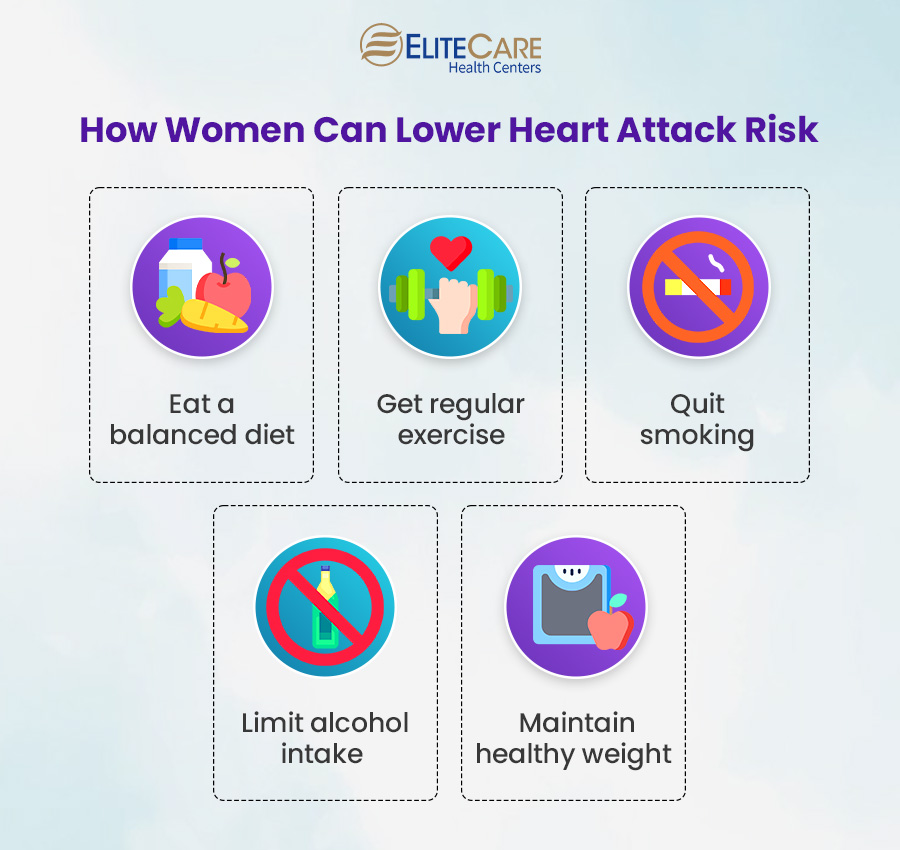
Quit smoking
For people with COPD, quitting smoking is the most crucial step in managing this condition as it can help slow down the progression of the disease and reduce symptoms.
Avoid triggers
Avoiding exposure to irritants like dust and chemicals can promote healing of the scarred lung tissues.
Take medications as prescribed
Several medications can help manage COPD, including bronchodilators, corticosteroids, and antibiotics. It is essential to take these medications as prescribed by a healthcare provider.
Maintain healthy weight
It is important to have a healthy BMI as being overweight can put a lot of strain on the heart and lungs, while being underweight can increase the risk of developing chest infections.
Get immunizations
Respiratory infections can be especially dangerous for people with COPD. Therefore, staying up to date on flu and pneumonia vaccinations is crucial.
Additionally, people suffering from COPD must also make sure to avoid any strenuous physical activity that can exacerbate breathing difficulties and cause shortness of breath. It is best to plan chores realistically and avoid physically demanding work for extended periods.
Conclusion
More than 150,000 Americans die each year due to chronic obstructive pulmonary disease. It can significantly affect an individual’s quality of life and make it difficult to perform daily activities, such as climbing stairs or even taking a shower. Additionally, poor lung function associated with COPD can exacerbate other health conditions, such as heart disease, diabetes, pulmonary hypertension and respiratory infections. It can also increase the likelihood of developing lung cancer. Therefore, taking preventive measures is crucial to avoid potentially life-threatening health outcomes.
If you or your elderly loved one is in need of personalized medical attention for respiratory infections, visit the nearest EliteCare Health Centers clinic for comprehensive treatment and immunizations. EliteCare is one of Florida’s best medical clinics, with a team of highly trained primary care physicians who offer senior care services. Some of their other services include venipuncture, preventative care, health checkups and more. Visit their website to schedule an appointment today.
